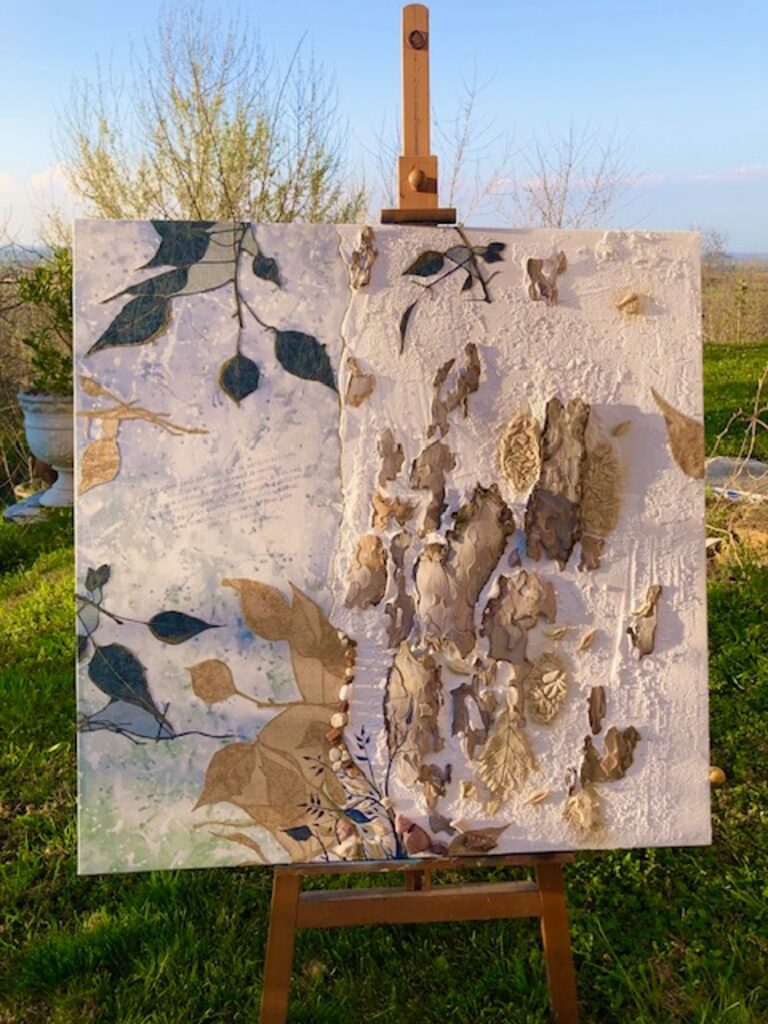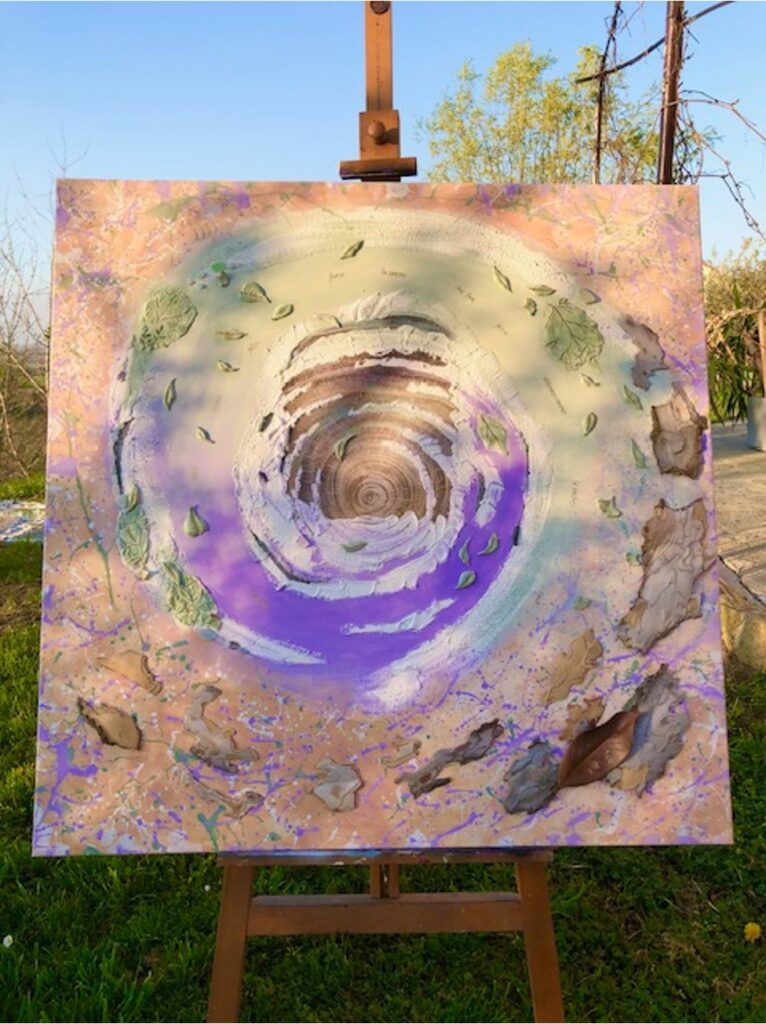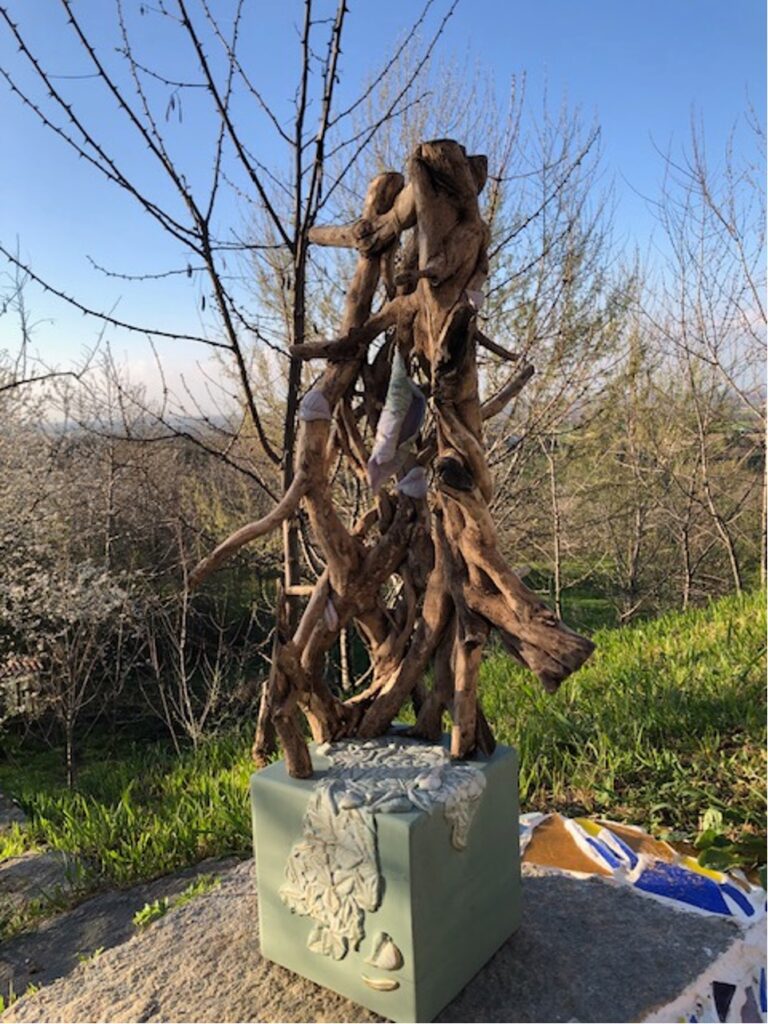EXTRAORDINARY EDITION
Quadri d’arredo | Home Decor | Progetti museali
“L’arte scuote dall’anima
la polvere accumulata
nella vita di tutti i giorni“
Pablo Picasso
ArtChiMiki realizza opere su tela che cercano di trasmettere un messaggio emozionale.
L’arte è emozione…
L’Arte tocca l’Anima.
Quadri d’Arredo su tela realizzati con tecniche miste; dove malte, cemento, colori, pietre e materiali
di riciclo creano armonia.
Opere di Art Desing per spazi d’arredo
unici e personalizzati.
BAT - Biennale di Arteterapia 2024
BAT - Art Therapy Biennial 2024
"Healing Nature"
La natura fra espressione artistica e relazione
30 agosto -15 settembre 2024 Perugia
Ex Chiesa Santa Maria della Misericordia
e Loggia dei Lanari.
Mostra a cura di Carlo Coppelli
e Marco Panizza.
Per la Biennale di arte terapia, dove hanno esposto
le loro opere artististi-arteterapeuti italiani e stranieri, ArtChiMiKi ha voluto appositamente creare tre opere:
due tele ed una scultura, che rappresentano
il percorso di trasformazione, che avviene facendo arte ma che si avverte anche stando a contatto con la Natura.
Come succede molte volte nei laboratori di arte terapia, l’ispirazione parte dai materiali naturali
e di recupero; in questa occasione: cortecce, muschio, sassi, vetri levigati dal mare, carte da parati, colori
e tanto altro hanno ispirato il duo artistico.
Per Michela e Chiara il processo creativo avviene
da tempo unendo due teste, due cuori e quattro mani,
che lavorano all’unisono.
Con queste opere hanno voluto rappresentare
la natura e l’arte che “curano”, il miracolo del processo creativo che avviene all’interno di una persona
quando immagina e crea.
For the Art Therapy Biennial 2024, where Italian and foreign artists-art therapists exhibited their works, ArtChiMiKi specifically wanted to create three works: two canvases and a sculpture, which represent the path of transformation, that occurs by making art but also staying in contact with Nature.
As often happens in art therapy laboratories, inspiration comes from natural and recycled materials; on this occasion: bark, moss, stones, glass smoothed by the sea, wallpaper, colors and much more inspired
the artistic duo.
For Michela and Chiara the creative process has been taking place for some time by union of two heads, two hearts and four hands, working in unison.
With these works they wanted to represent the nature and art that “heals”, the miracle of the creative process that happens inside a person when imagine and create.
Opera 1.
“Meeting the Master Tree”
Tela formato cm 100 x 100 cm, realizzata con tecniche miste, paste materiche, materiali di recupero e materiali naturali (sassi, cortecce, ecc.).
Canvas size 100 x 100 cm, made with mixed techniques, material pastes, recycled materials and natural materials (stones, bark, etc.).

Nella prima opera, il duo artistico ha immaginato
un Albero Maestro, che può essere visto in due modi: il primo come un vero contatto fisico con un albero, quando chiudendo gli occhi si può toccare la corteccia e sentire l’energia potente e curativa; il secondo in ambito simbolico come l’incontro con il “nostro Albero Interiore”, il nostro Sé più profondo.
All’interno dell’opera è stata inserita anche la citazione di Herman Hesse, che considerava gli alberi uomini solitari, nel suo testo Il canto degli alberi del 1919.
“Gli alberi sono santuari. Chi sa parlare con loro, chi li sa ascoltare, conosce la verità. Essi non predicano dottrine e precetti, predicano, incuranti del singolo, la legge primigenia della vita. Così parla un albero: in me è celato un seme, una scintilla, un pensiero,
io sono vita della vita eterna”.
Hermann Hesse
In the first work, the artistic duo imagined a Master Tree, which can be seen in two ways: the first as a real physical contact with a tree, when by closing your eyes, you can touch the bark and feel the powerful and healing energy; the second in a symbolic field such as the encounter with “our Inner Tree”, our deepest Self.
The quote from Herman Hesse, who considered trees to be solitary men, in his 1919 text “Trees are Sanctuaries”, was also included in the work.
“Trees are sanctuaries. Whoever knows how to speak to them, whoever knows how to listen to them, can learn the truth. They do not preach learning and precepts, they preach, undeterred by particulars, the ancient law of life.
A tree says: A kernel is hidden in me, a spark, a thought,
I am life from eternal life.”
Hermann Hesse
Opera 2.
“Il Contatto”
“The Contact”
Tela cm 100 x 100 cm, 2024, realizzata con tecniche miste, paste materiche, materiali di recupero e materiali naturali e inserti di argilla dipinta.
Canvas 100 x 100 cm, 2024, made with mixed techniques, material pastes, recycled materials and natural materials and painted clay inserts.

Nella seconda tela avviene il “contatto”, che può essere con la natura, con un “fare” artistico,
o con un Maestro che innesca un processo di trasformazione, di “guarigione” di alcune parti di noi che provavano disagio. In questo grande vortice di trasformazione è stata inserita anche la poesia Le Foglie di Leonardo Roselli tratta dal libro 14 poesie brevi sulla natura, attinente con il percorso che ArtChiMiki vuole suggerire a chi osserva le opere.
“Danzano col vento ancora felici, forse lo sanno che fra poco abbracceranno le radici”.
Leonardo Roselli
In the second canvas the “contact” occurs, which can be with nature, with an artistic “doing”, or with a Master who triggers a process of transformation,
of “healing” of some parts of us that felt discomfort. The poem “The Leaves” by Leonardo Roselli was also included in this great vortex of transformation, taken from the book 14 short poems on nature, relevant to the path that ArtChiMiki wants to suggest to those who observe the works.
“They dance with the wind still happy, perhaps they know that soon they will embrace the roots”.
Leonardo Roselli
Opera 3.
“L’Abbraccio”
“The Hug”
Scultura realizzata in legno con materiali naturali: scheletro di edera rampicante, argilla dipinta. 2024. Formato cm 36 x 38 x cm 58h. Basamento cubico in legno f.to 20x20x20cm con inserti in argilla,
tessuti e parti dipinte.
Sculpture made of wood with natural materials: climbing ivy skeleton, painted clay. 2024. Format 36 x 38 x 58h cm. Cubic wooden base measuring 20x20x20cm with clay inserts, fabrics
and painted parts.

Per la terza opera, le artiste hanno utilizzato una radice intrecciata di edera, potata ed abbandonata sul terreno trovata in modo fortuito durante una passeggiata nei boschi. La sua particolare forma ricorda un abbraccio che può essere interpretato come un vero contatto fisico con chi amiamo, oppure il contatto con una parte profonda di noi che aveva bisogno di essere pacificata.
La scelta poetica da inserire sulla scultura è andata su Thoreau, una parte del Walden, Vita nei Boschi; un altro autore che elogiava un lungo cammino spirituale dove l’uomo può ritrovare sé stesso attraverso una vita solitaria a stretto contatto con la natura.
“Andai nei boschi perché desideravo vivere con saggezza, per affrontare solo i fatti essenziali della vita,
e per vedere se non fossi capace di imparare quanto essa aveva da insegnarmi, e per non scoprire, in punto di morte, che non ero vissuto. Non volevo vivere quella che non era una vita, a meno che non fosse assolutamente necessario. Volevo vivere profondamente, e succhiare tutto il midollo di essa, vivere da gagliardo spartano, tanto da distruggere tutto ciò che non fosse vita, falciare ampio e raso terra e mettere poi la vita in un angolo,
ridotta ai suoi termini più semplici”.
HENRY DAVID THOREAU, Walden. Vita nel bosco, 1854.
For the third work, the artists used a braided ivy root, pruned and abandoned on the ground, found in fortuitous way during a walk in the woods. Its particular shape recalls a hug which can be interpreted as real physical contact with those we love or contact with a deep part of us that needed to be pacified.
The poetic choice was to include on the sculpture a Thoreau’s’ quote, a part of Walden, Life in the Woods; another author who praised a long spiritual journey where man can rediscover himself through a solitary life
in close contact with nature.
“I went to the woods because I wished to live deliberately, to front only the essential facts of life, and see if I could not learn what it had to teach, and not, when I came to die, discover that I had not lived. I did not wish to live what was not life, living is so dear; nor did I wish to practise resignation, unless it was quite necessary. I wanted to live deep and suck out all the marrow of life, to live so sturdily and Spartan-like as to put to rout all that was not life, to cut a broad swath and shave close, to drive life
into a corner, and reduce it to its lowest terms”
HENRY DAVID THOREAU, Walden. Life in the Woods, 1854
Per informazioni scrivere a
info@artchimiki.it
